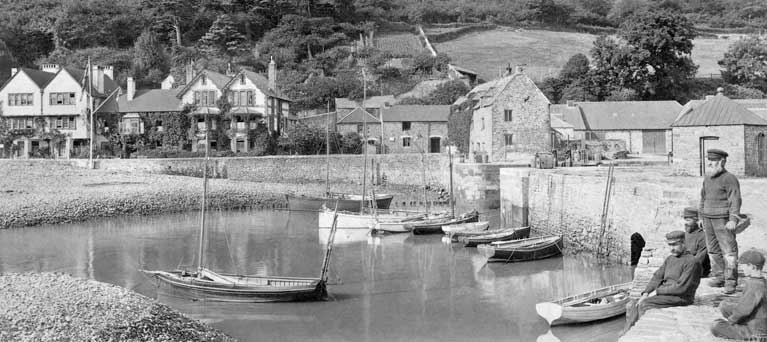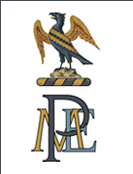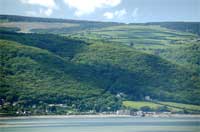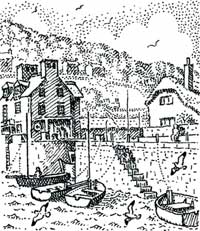Copyright 2011 © Porlock Manor Estate


Where Exmoor tumbles to the sea

Porlock Weir 1907
Copyright The Francis Frith Collection

From the end of the last glacial period, about 10,000 years ago, the melting of ice caps has caused the sea level in the Bristol Channel to rise about 40 metres (131 ft). It has been at roughly its present level for the last 2,000 years but is still rising very slowly.
Between 7,000 and 8,000 years ago the area that is now Porlock Beach was more than five miles inland. It was a flat, low lying area and the climate was warm and wet. The area was thickly wooded and Mesolithic people lived by hunting and fishing. They probably hunted aurochs, an ancient species of wild cattle, the bones of which have been found here.
The stumps of trees were preserved in the marshy conditions in which they grew and have today been revealed as the sea has risen to erode them. At low tide you can see tree trunks, a thin layer of peaty soil and a large amount of grey clay soil which is now inhabited by sea shells known as piddocks.
Between 7,000 and 8,000 years ago the area that is now Porlock Beach was more than five miles inland. It was a flat, low lying area and the climate was warm and wet. The area was thickly wooded and Mesolithic people lived by hunting and fishing. They probably hunted aurochs, an ancient species of wild cattle, the bones of which have been found here.
The stumps of trees were preserved in the marshy conditions in which they grew and have today been revealed as the sea has risen to erode them. At low tide you can see tree trunks, a thin layer of peaty soil and a large amount of grey clay soil which is now inhabited by sea shells known as piddocks.
The Porlock Manor Estate has been linked to the Blathwayt family since 1686 when William Blathwayt, Secretary of State to King William III, married Mary Wynter. Porlock was one of the Somerset manors left to Mary and has since passed down the Wynter-Blathwayt line.
The importance of the Estate has always been underpinned by the picturesque harbour at Porlock Weir. For centuries this has been not only one of the very few places along the rugged Exmoor coast capable of providing a haven for small craft, but it has also played a vital part in the life of eastern Exmoor. The sea route was by far the easiest way to and from the area and the harbour was once used by coasters carrying timber to South Wales in exchange for coal and limestone for making lime in local kilns. It is now full of leisure craft and fishing vessels.
The lock gates now used mainly to flush pebbles from the harbour entrance, are shortly to be the subject of a restoration programme.
The importance of the Estate has always been underpinned by the picturesque harbour at Porlock Weir. For centuries this has been not only one of the very few places along the rugged Exmoor coast capable of providing a haven for small craft, but it has also played a vital part in the life of eastern Exmoor. The sea route was by far the easiest way to and from the area and the harbour was once used by coasters carrying timber to South Wales in exchange for coal and limestone for making lime in local kilns. It is now full of leisure craft and fishing vessels.
The lock gates now used mainly to flush pebbles from the harbour entrance, are shortly to be the subject of a restoration programme.
A look back at Porlock Weir and the Porlock Manor Estate
s
Christopher George Wynter Blathwayt MC.,MA.,FCA.(1912-1990) elder son of Major Henry Wynter Blathwayt RFA(1887-1917), was a descendent of William Blathwayt (1649-1717). During World War ll he was seconded from KRRC to Operation Jedbugh and Special Forces. He parachuted into Brittany in July 1944 to organise resistance in South West Finistere, later being awarded the Military Cross and Croix de Guerre. In January 1945 he parachuted into the Burmese jungle, serving with Force 136 until peace was won.



Estate Office: 14 Queen Square Bath BA1 2HN
Website by Knowles Cadbury Brown
Can you identify our mystery object?
Click here
Click here